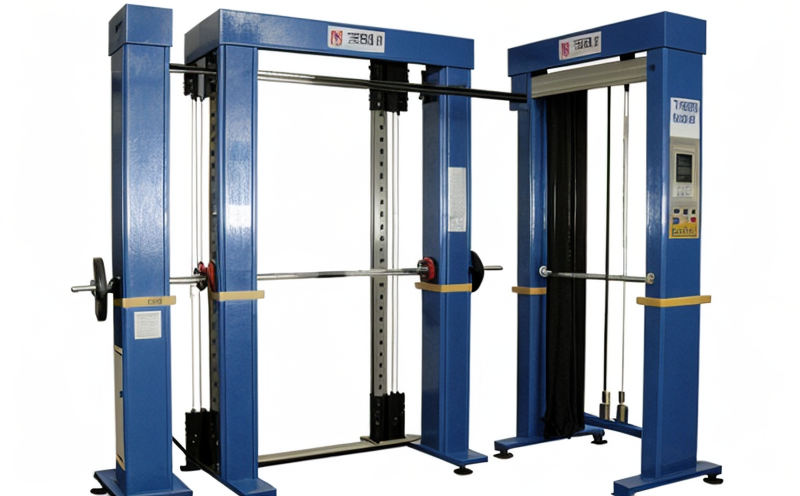ISO 3801 Textiles Determination of mass per unit area GSM
The ISO 3801 standard provides a method for the determination of the mass per unit area (g/m² or GSM) of textiles. This is an essential measurement in the textile industry, as it helps manufacturers and quality managers to ensure that their products meet specific requirements set by customers or regulatory bodies.
The process involves measuring the weight of a known surface area of fabric, typically 1 m², under controlled conditions. The result is expressed in grams per square meter (g/m²). This measurement is crucial for several reasons:
- It ensures that products conform to specified standards and customer requirements.
- It aids in quality control by identifying any variations in the production process.
- It supports research and development efforts, allowing engineers to understand how different materials behave under various conditions.
The test is performed using a balance with a resolution of at least 0.1 g, and the sample should be conditioned according to ISO standards before testing to ensure accurate results. Pre-conditioning involves drying or humidifying the samples as required by the standard.
Once prepared, the sample is cut into strips that are approximately 25 mm wide and 300 mm long. These strips are then placed on a flat surface, ensuring they do not overlap, and allowed to dry again if necessary. The balance is then used to measure the weight of each strip accurately.
The results from multiple measurements should be averaged to obtain the final GSM value. This process ensures consistency and accuracy in the measurement, which are critical for maintaining product quality.
Understanding the mass per unit area is particularly important in sectors like automotive textiles, where material thickness can significantly impact performance and safety. In these applications, a higher GSM might indicate stronger, more durable materials suitable for heavy-duty use. Conversely, lower GSM values could be preferred for lightweight garments or upholstery designed for comfort and flexibility.
For quality managers and compliance officers, knowing the GSM of their products is essential for ensuring they meet industry standards and customer expectations. This measurement also plays a vital role in research and development, helping engineers optimize material properties to suit specific applications.
Why It Matters
The determination of mass per unit area (GSM) is critical for several reasons. Firstly, it ensures that products are manufactured to the required specifications, which is especially important in sectors like automotive and healthcare where material quality directly impacts safety and performance.
- Consistency: GSM helps maintain consistent product quality across batches and production runs.
- Safety: In industries such as medical textiles, the correct thickness of materials can be a matter of life or death. Proper GSM measurement ensures that products are safe for use.
- Performance: For performance textiles like those used in sports gear, the right GSM can enhance durability and comfort.
In addition to these practical benefits, accurate GSM measurements also contribute to efficient supply chain management by allowing companies to accurately estimate material quantities needed for production. This reduces waste and minimizes costs associated with over-ordering or under-ordering raw materials.
Compliance officers will find that knowing the GSM of their products is crucial for meeting international standards such as ISO 3801. Compliance with these standards not only helps avoid legal issues but also enhances a company's reputation, making it more attractive to customers and partners.
Industry Applications
The determination of mass per unit area (GSM) is widely used across various industries. In the automotive sector, for instance, accurate GSM measurements are essential for designing safe and efficient vehicles. The right thickness of materials can affect fuel efficiency and overall vehicle performance.
- Automotive Textiles: Materials like seat covers, door panels, and headliners all require precise GSM values to ensure they meet safety standards while also providing comfort and durability.
- Medical Textiles: In this sector, the correct thickness of materials can be a matter of life or death. Proper GSM measurements are crucial for ensuring that medical textiles are safe and effective.
- Sports Apparel: For high-performance sports gear, the right GSM can enhance durability and comfort. This is particularly important in sectors like cycling and running where lightweight yet strong materials are sought after.
In addition to these specific industries, GSM measurements are also used in home textiles such as carpets and curtains, where thickness affects both aesthetics and functionality. In industrial applications, the correct GSM can impact the efficiency of conveyor belts or packaging materials.
Understanding GSM is not just about meeting specifications; it's about optimizing product performance and ensuring compliance with international standards. By accurately determining GSM values, companies can ensure that their products are safe, efficient, and meet customer expectations across various industries.
Quality and Reliability Assurance
The determination of mass per unit area (GSM) is a key component in quality and reliability assurance processes. By ensuring that products consistently meet the required GSM levels, companies can maintain high standards of product quality and reliability.
- Consistency: Regular measurement helps identify any inconsistencies in the production process, allowing for timely adjustments to ensure consistency.
- Error Detection: Accurate measurements help detect errors or deviations from the expected GSM levels early on, preventing defective products from reaching customers.
- Cross-Check Verification: Comparing measured values against historical data allows for cross-check verification of product quality and reliability over time.
- Compliance Monitoring: Ensuring that all products meet the specified GSM levels helps monitor compliance with industry standards and customer requirements.
In addition to these benefits, accurate GSM measurements contribute to a more efficient supply chain by allowing companies to better estimate material quantities needed for production. This reduces waste and minimizes costs associated with over-ordering or under-ordering raw materials.
By incorporating GSM measurement into their quality control processes, companies can enhance the reliability and performance of their products. This not only improves customer satisfaction but also enhances a company's reputation, making it more attractive to customers and partners.





